It has been two years since an Ariane 5 rocket launched the James Webb Space Telescope into space. A collaboration between NASA, the European Space Agency (ESA) and the Canadian Space Agency, Webb has been widely touted as the successor to the Hubble Space Telescope. Indeed, it possesses observational capabilities that the astronomers who launched Hubble back in 1990 could only dream of.
Yet even as Webb shot into space on 25 December 2021, the astronomers watching it were already dreaming of the telescope that might succeed it. This was because they already knew the extent of Webb’s potential: the size of its mirror, the wavelengths it could observe and the capabilities of its instruments.
“Even before it was launched, we were like, ‘we need this other telescope that’s going to be bigger,” says Sarah Rugheimer, professor of astrophysics at York University, Toronto, Canada.
Big telescopes take a long time to develop – decades in most cases – and so planning starts early. “You don’t just wait to see what happens with a telescope like Webb because you already know, theoretically, what some of its limitations will be,” says Rugheimer.
In her field of astrobiology, Rugheimer is interested in looking for signs of life on planets orbiting stars other than our own. The best way to do this is to isolate the light from these exoplanets and analyse it for gases that may betray extraterrestrial metabolisms at work.
Webb is able to do this for larger, gaseous planets, but those aren’t the ones where we expect life to exist. Astronomers believe that rocky Earth-sized planets are much better targets. But as powerful as Webb is, it doesn’t have the light-gathering ability to do this type of analysis for more than about five of these kinds of planets.
“When you’re thinking about finding life in the Universe and you ask someone, ‘Well, how many planets would you look at?’ They’re not gonna say five. They’re gonna say hundreds or more,” says Rugheimer.
So, when it comes to searching for life on exoplanets, Webb is a testing ground for a successor telescope that will be bigger and better.
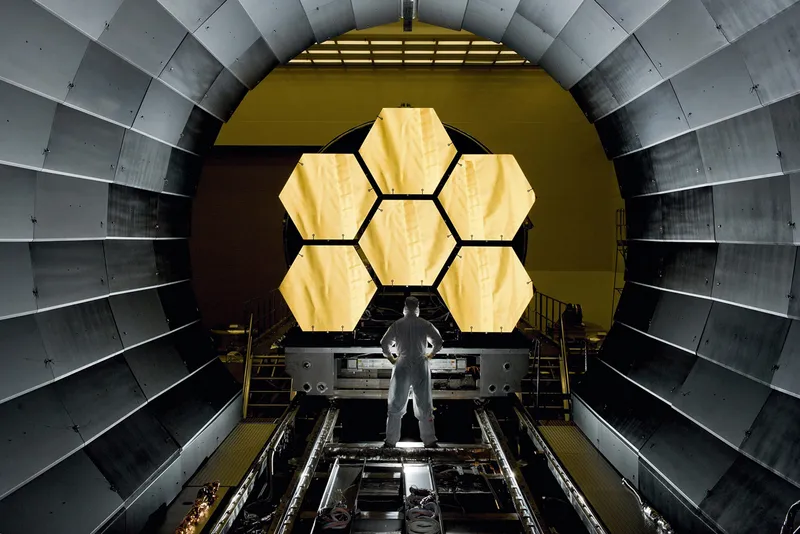
New and improved
In January 2023, Dr Mark Clampin, the director of NASA’s astrophysics division, told a meeting of the American Astronomical Society that the successor to Webb would be called the Habitable Worlds Observatory (HWO).
Although it’s still very early days in the HWO’s design process – even the name is only a working title – a couple of things have already become clear about the project. HWO will be as large as Webb, but will observe at the same wavelengths as Hubble.
This means that the HWO’s mirror should be around 6m (19ft) in diameter and instead of infrared, it should work at optical and ultraviolet wavelengths. Like Webb, it will be situated at Lagrange Point 2 (L2), the gravitational sweet spot 1.5 million kilometres (approx 932,000 miles) from Earth.
And, like Hubble, it will be designed for periodic upgrading, although these servicing missions will be undertaken by robotic spacecraft instead of astronauts.
Read more:
- What are the odds that aliens are humanoid?
- What would actually happen if we discovered a message from an alien planet?
The concept for this mission comes from an amalgamation of two others that NASA studied in the late 2010s. The first was called LUVOIR, the Large Ultraviolet, Optical and Infrared Surveyor. As the name suggests, it would cover a large range of wavelengths centred on visible light and be a general astrophysical observatory, as Webb and Hubble were.
Two conceptual designs were developed for LUVOIR: one with an 8m-diameter (26ft) mirror and one with a 15m-diameter (49ft) mirror. Both designs would be made of hexagonal mirror segments like Webb.
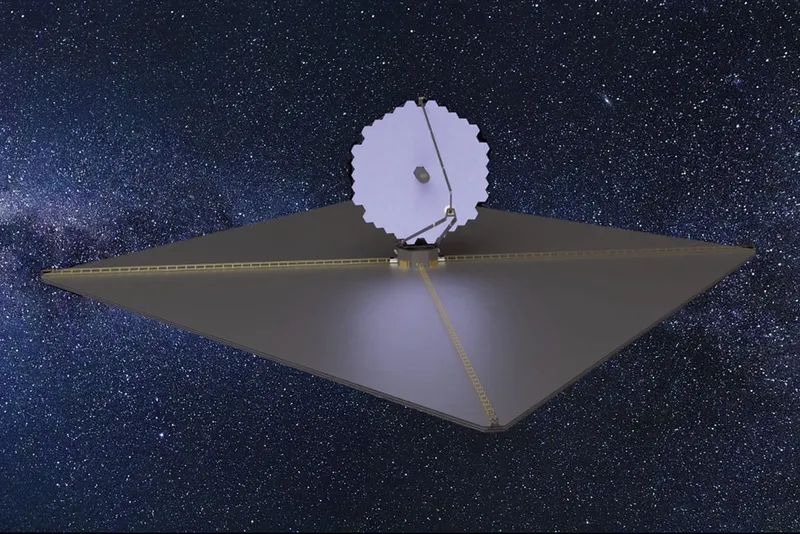
The second concept that NASA investigated was the Habitable Exoplanet Imaging Mission (HabEx). This was envisaged to be a space telescope with a 4m-diameter (13ft) mirror. Although optimised for the investigation of exoplanet atmospheres, it could also extend many of the investigations that Hubble had pioneered.
“HabEx was designed to be a somewhat more conservative mission [than LUVOIR] that could still address the main science goal of directly imaging and taking spectra of Earth-like planets around nearby Sun-like stars. It would also enable a broad range of other astronomy, the sort you could have done with a Hubble that had a larger aperture and modern technology instruments,” says Scott Gaudi, the Thomas Jefferson Professor for Discovery and Space Exploration at The Ohio State University, who was part of the HabEx study.
Both projects were submitted to the 2020 Astronomy and Astrophysics Decadal Survey, run by the National Academy of Sciences in the US, along with two other mission concepts: an X-ray telescope called Lynx, and a far-infrared telescope called Origins.
After due deliberation, the survey recommended NASA conduct a programme of technological development for five years to ready itself to build all of these missions, with the caveat that LUVOIR and HabEx be merged into a single mission with a 6m-diameter (19ft) telescope.
This is the mission now called HWO that Clampin announced at the American Astronomical Society, and it will be the first mission to be worked on to completion of the technology development.
Read more:
- Is searching for aliens worth the risk? Absolutely, says UK’s leading astronomer
- Could alien life breathe a gas other than oxygen?
The new great observatories
The 2020 Astronomy and Astrophysics Decadal Survey placed the development of a new suite of complementary space observatories at the top of the US's agenda for space-based astrophysics. In response to this recommendation, NASA began a dedicated technological development project for the new Great Observatories programme.
NASA's original great observatories were the Hubble Space Telescope, the Compton Gamma Ray Observatory, the Chandra X-ray Observatory, and the Spitzer Space Telescope.
Working both individually and collaboratively, these missions re-wrote the textbooks and revolutionised our understanding of the cosmos. But these spacecraft are ageing; only Hubble and Chandra are still functioning.
The New Great Observatories programme comprises three missions. The Habitable Worlds Observatory, which will work at ultraviolet, optical, and infrared wavelengths, an X-ray observatory, Lynx, and the far-infrared mission called Origins complete the trio.
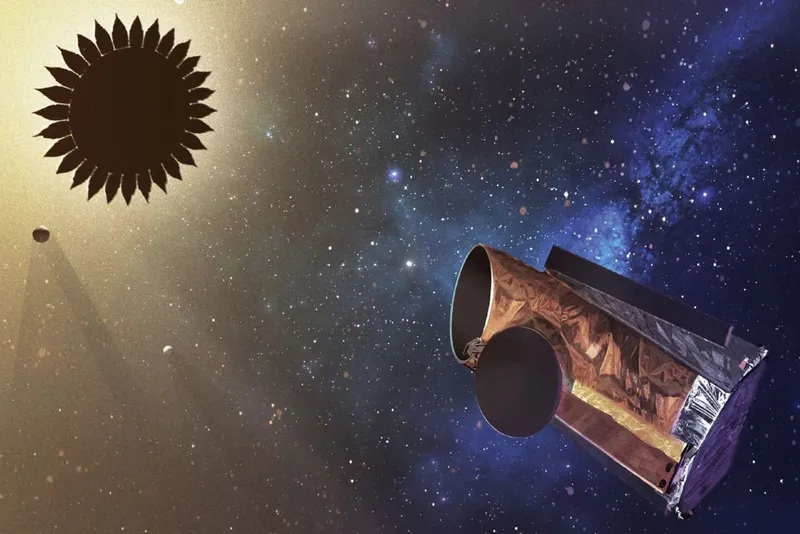
In Europe, other big missions, such as the X-ray mission NewAthena and the infrared mission LIFE, are being studied too. Together, if funded to completion, the European and American missions will provide complementary science.
When might we see the first of these great observatories launch? "The decadal survey said 2045, but on my more optimistic days, I would say that I think we can do it by the late 2030s. But that requires the stars – and funding – to align," says Gaudi.
The breath of life
Searching for life on other worlds is a dream long held by astronomers. Traditionally, it has relied on using radio telescopes to listen for signs of extraterrestrial communications. This, of course, assumes that the extraterrestrials are technologically advanced (but not too advanced), so that they’re using radios.
When searching for non-intelligent species, however, we’ve so far been restricted to our Solar System, and the spacecraft designed to scour the Martian landscape, or observe the moons of Jupiter and Saturn for signs of habitability or life.
The HWO would totally change that by opening up the search to planets beyond our Solar System, and by being sensitive to life at any stage of its evolution. The trick to doing this is the fact that all living things breathe. This means taking in one gas and expelling another. On Earth, that process forces our atmosphere out of ‘chemical equilibrium’ by placing more oxygen and methane in our atmosphere than would otherwise occur.
If life vanished from Earth tomorrow, the oxygen and methane the atmosphere contains would gradually be removed by chemical and geological processes.
So, to find a planet with an atmosphere that can’t be explained solely by chemistry could be a sign that there are breathing lifeforms constantly replenishing the atmosphere with molecules that don’t otherwise coexist in nature. And the way to do that is to isolate the light from the target planet.
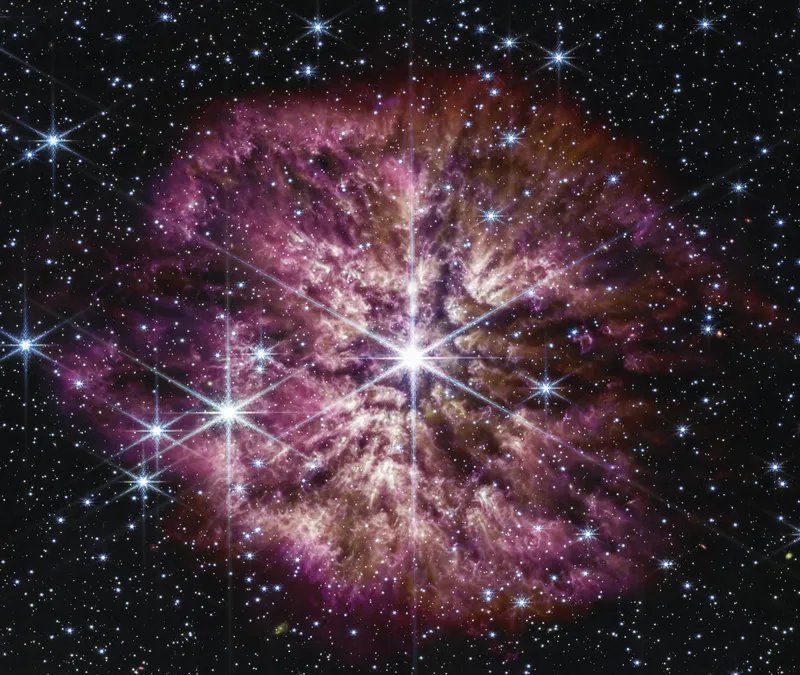
Light carries so much more information than just the brightness of a celestial object. Splitting light into its constituent wavelengths produces a rainbow-like spectrum that’s intersected with a series of dark lines. These lines are produced by the different atoms and molecules that the light has passed through.
Each chemical absorbs a different pattern of wavelengths and so produces a different pattern of dark lines. It’s the equivalent of a fingerprint, and allows astronomers to determine the chemical composition of a celestial object, no matter how far away that object happens to be.
But collecting enough light from a planet is fiendishly difficult because the planet only reflects starlight, and its parent star is a billion times brighter.
“The analogy that often gets used is that it’s like trying to detect a firefly next to an industrial searchlight. The firefly and the searchlight are about 5m (16ft) away from each other, but are located in Los Angeles, while you’re standing in New York City. That’s the analogy; although, it’s actually much worse than that if you go through numbers,” says Gaudi.
What this means, in practice, is that some means of suppressing the star’s light will be needed by the telescope in order for the planet to be seen. In HWO, a device called a coronagraph will be used to physically block the light from the central star, but it’s a delicate operation that relies on extreme precision.
“Coronography is hard, especially at this level. It’s one of the technology tent poles that we’re dealing with right now, trying to advance it to the point where it needs to be for the Habitable Worlds Observatory,” says Gaudi. While NASA is betting on coronography, there are other ways to suppress the blinding starlight.
Rugheimer is involved in a project called the Large Interferometer For Exoplanets, or LIFE for short. Coordinated by the Swiss Federal Institute of Technology (ETH) in Zürich, LIFE could become a mission of its own.
Like HWO, LIFE is focused on investigating nearby planets to analyse their atmospheres for traces of life. Unlike HWO, it prioritises the infrared part of the spectrum and isn’t a single telescope with a coronagraph.
Instead, LIFE is a flotilla of space telescopes that would combine their light in such a way that a process called destructive interference would eliminate the glare from the star, leaving the much fainter reflected light from the planet to shine through.
It’s a resurrection of an idea that ESA pioneered in the mid-1990s and studied for around a decade. Back then, the concept was called Darwin and would have consisted of three or four 4m (13ft) space telescopes and a central beam-combining spacecraft. As envisaged, Darwin would have been able to provide images that were 10-100 times more detailed than Webb.
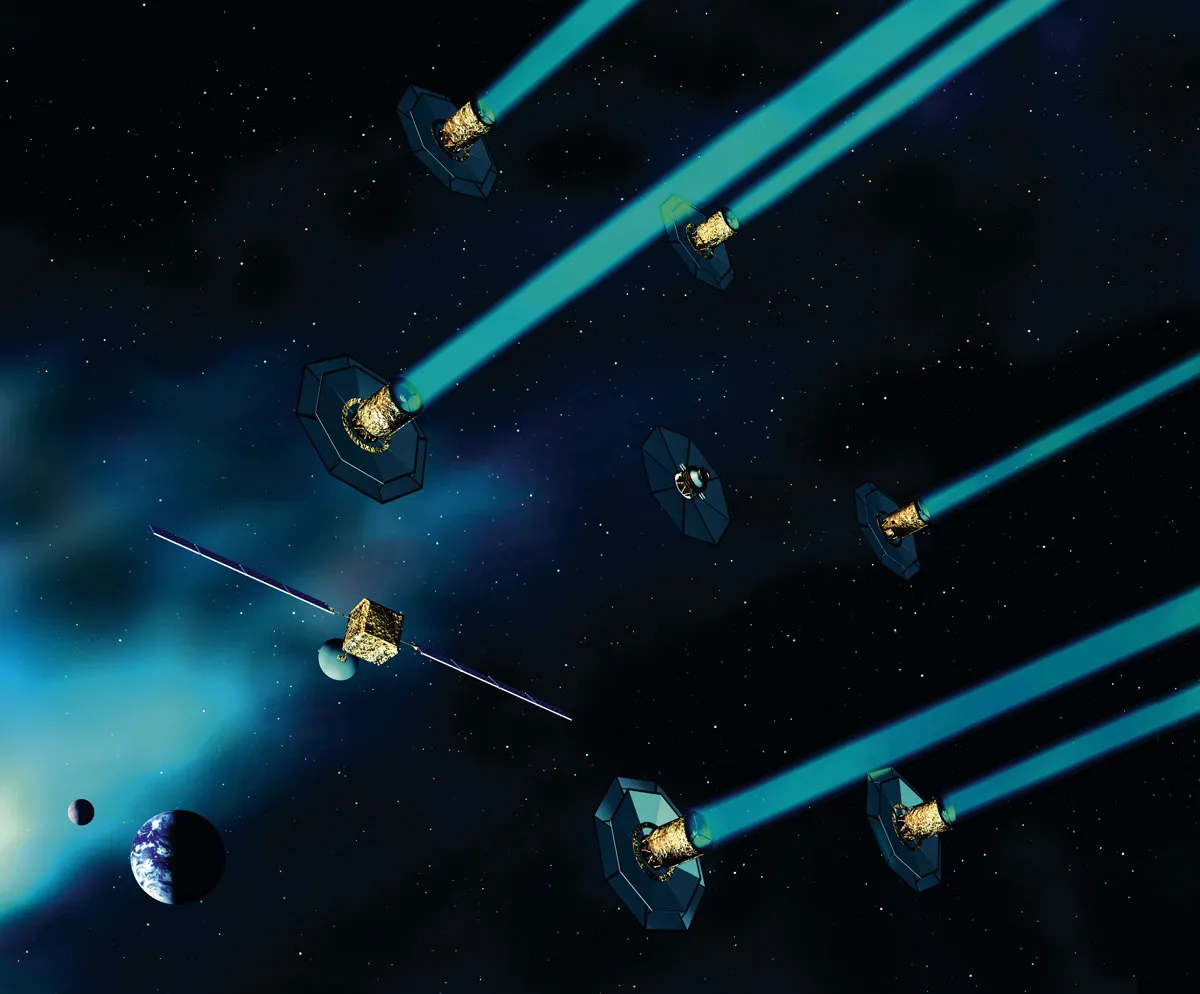
It was a technologically challenging and expensive mission, but ultimately it was shelved because, back then, we simply didn’t know enough about exoplanets. Astronomers had no idea how many Earth-sized worlds there were or how close we might find them to the Solar System.
Darwin was designed to, first, find the planets and, second, analyse their atmospheres. But in a worst-case scenario, Darwin could have discovered that Earth-like worlds are rare and so have no targets to investigate.
“I would say that was the main reason Darwin didn’t move forward,” says Rugheimer.
Now, around three decades later, things are very different. NASA’s Kepler space telescope has performed its exoplanet census and shown that planets outnumber stars in the Galaxy. More than that, 20-50 per cent of stars are likely to have rocky planets similar in size to Earth located within their habitable zones – the orbital region where it’s warm enough for liquid water to exist on the surface.
The LIFE concept emphasises the infrared part of the spectrum for two reasons. Firstly, the contrast between the star and the planet is ‘only’ a million to one, meaning that the star is a million times brighter than the planet. This is a thousand times better than the contrast in the visible region of the spectrum where the star outshines the planet by a billion times to one. So extracting the planet’s signal from the glare from the star is easier at infrared wavelengths.
Secondly, a much higher amount of molecules interact with infrared than with visible light, so the analysis of the atmosphere can be more complete.
This is not to say that the visible is second-rate, however. Oxygen, water and carbon dioxide are all detectable at visible wavelengths and are all essential for showing whether there’s life on the target world. The ultraviolet wavelength offered by HWO would also reveal the magnetic activity of the parent star. If those levels are high, it could jeopardise the habitability of the planet.
Another thing that we may be able to see at visible wavelengths is the reflection of the star’s light from any oceans that might be present on the planet.
Of course, the ideal situation would be to have both HWO and LIFE. “If I had unlimited money, I would do both. We want all the wavelengths,” says Rugheimer.
Whether astronomers get both remains to be seen. And beyond looking for life on other planets, there are a great number of other investigations that these observatories can also tackle (see ‘What will the HWO investigate?’). So whatever Webb’s successor looks like, it’s certainly going to have a lot of work to do.
Read more:
- Alien mothership might be spying on us from orbit, says top Harvard scientist
- Why hasn't intelligent alien life found us?
What will the WHO investigate?
Movement
HWO will measure the movement of individual stars in galaxies beyond the Milky Way to allow astronomers to analyse the rotation of those galaxies.
A galaxy’s rotation is thought to be determined by the distribution of mysterious dark matter around it. These measurements will allow astronomers to investigate that distribution.
Expansion
HWO will observe Cepheid variable stars to allow astronomers to measure the expansion rate of the Universe with much greater accuracy.
Astronomers have uncovered the ‘Hubble tension’, where the expansion rate determined by different methods don’t match. These measurements will either help resolve the tension or confirm its reality.
Aurorae
HWO will observe aurorae on the outer planets of the Solar System to allow astronomers to investigate the magnetic influence of the Sun.
The space between the planets is filled with magnetic fields and electrically charged particles from the Sun. These observations will allow astronomers to understand how planets interact with these components.
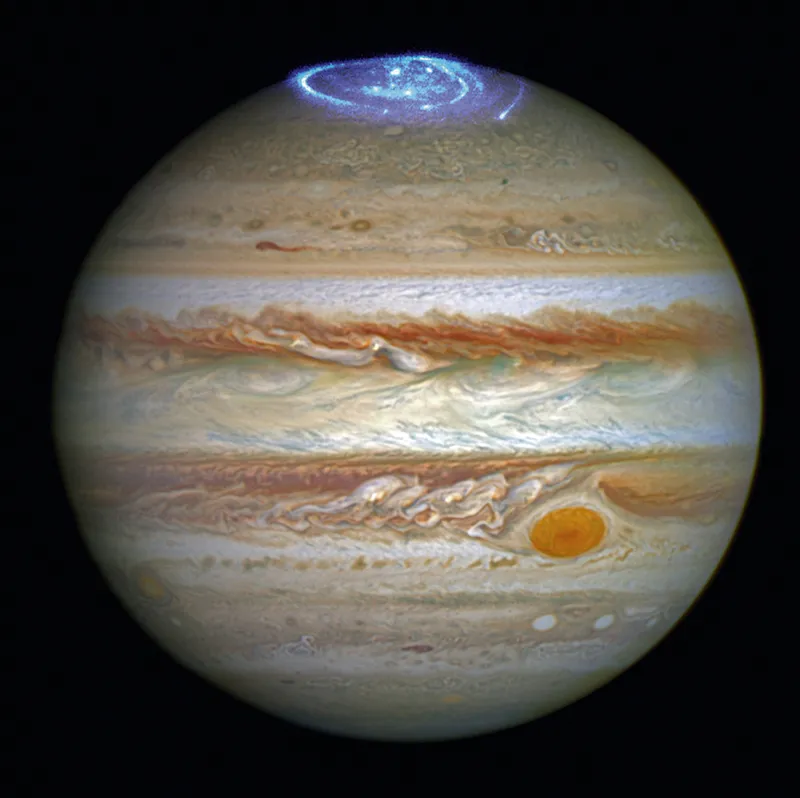
Volcanism
HWO will investigate cryovolcanoes on moons such as Europa and Enceladus to allow astronomers to investigate their interiors.
Moons with volcanic eruptions of water and ice are thought to contain oceans. HWO’s observations would allow astronomers to investigate the composition of these oceans without the need to a visit the moons.
Objects
HWO will measure the objects in the Kuiper Belt, beyond the orbit of Neptune, to allow astronomers to calculate their size and density.
The icy, rocky objects on the edge of our Solar System are ‘leftovers’ from the formation of the planets. Observations of them will allow astronomers to understand more about the formation of the Solar System.
About our experts
Sarah Rugheimer is professor of astrophysics at York University, Toronto, Canada, where she studies the atmospheric biosignatures in Earth-like planets. She is the author of Searching for Extraterrestrial Life and holds a PhD in astrophysics from Harvard University.
Scott Gaudi is a professor for Discovery and Space Exploration at Ohio State University. He is a member of the Science Definition Team for NASA’s Wide-Field Infrared Survey Telescope (WFIRST), and is the chair-elect for the NASA Exoplanet Exploration Analysis Group.
Read more:
